Now, densely built-up areas of business and residence jostle and hustle within what is said to be the world’s largest human-made forest. A lot has happened since the city's founding. Johannesburg came into existence after gold was found on the Witwatersrand in 1886. After that, we built bars, published newspapers, and constructed churches, schools and libraries. Of course, what had to follow was a prison (1893) which later turned into a military fort and more recently (2004) became known as Constitution Hill: a museum that still bears testament to the darker aspects of South Africa's turbulent past.
South Africans have been fighting all their lives, generation after generation, and still our resilience shines through. Thankfully, Nelson Mandela became president (1994) and we could revise our flag (1997). A little while after, we even built him a bridge (2003) linking Newtown and Braamfontein among other things, in commemoration. From an anthropological perspective, Joburg is about an hour away from the Cradle of Humankind, where, even now, we’re discovering extinct human species.
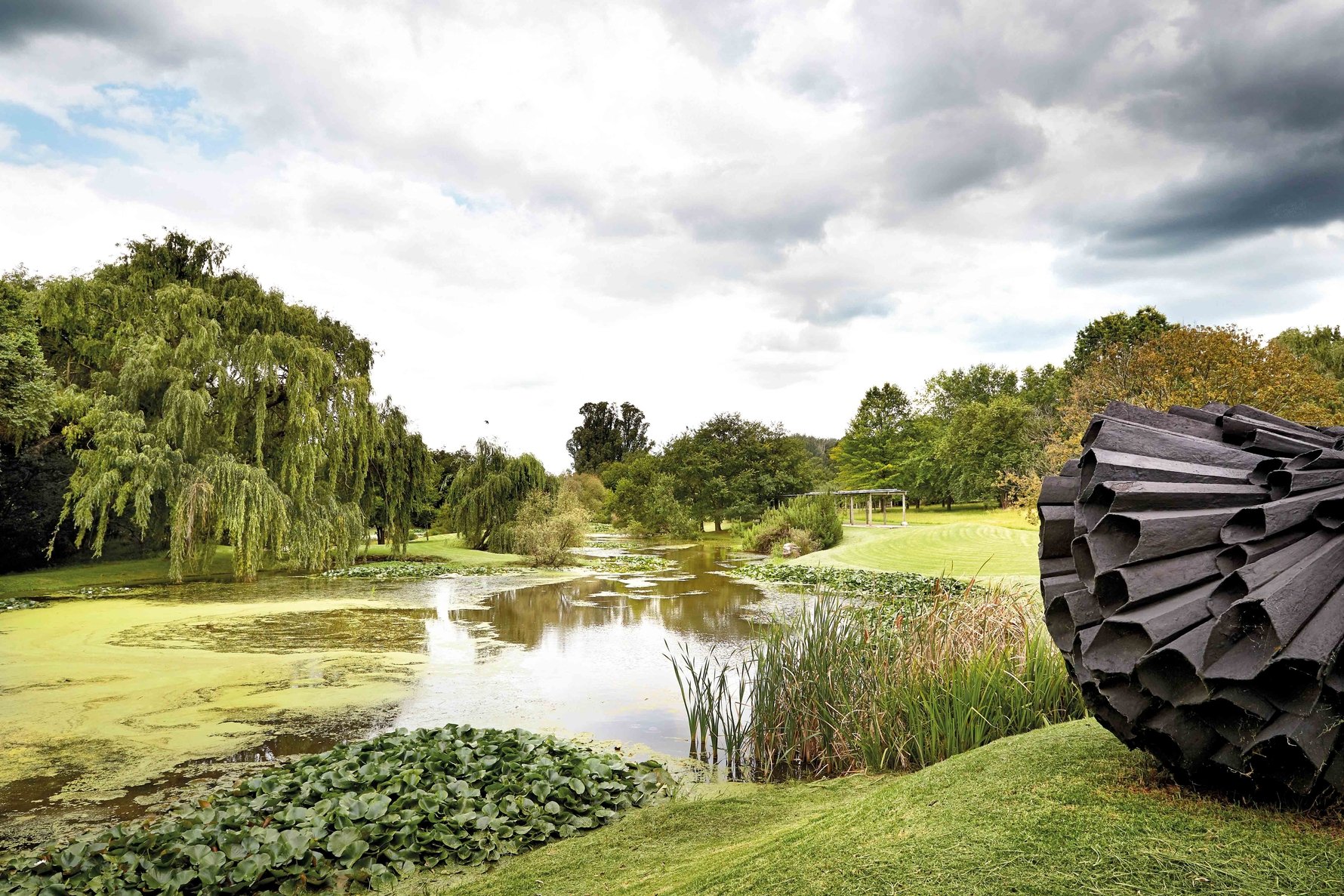
From a creative point of view, Polly Street Art Centre (1952) changed the lives of many South Africans as a place that harnessed significant advancement for black artists in the Transvaal (the south-central part of the Transvaal eventually became Gauteng). Drum Magazine was established in 1951 with Jürgen Schadeberg heading the photography and layout department, recording history as it unfolded in apartheid South Africa. In 1988, the Gay and Lesbian Organisation of Witwatersrand (GLOW) was founded and, in 1995, the Johannesburg Biennale art exhibition began. We’re a little surprised that the Johannesburg Art Gallery is still standing after its foundations were laid in 1911 but there's that resilience for you.
So what other Joburg stalwarts have stood the test of time in our ever-evolving, 138-year-old city? Come history hopping with us through Joburg's oldest restaurants, bars, shops, galleries, theatres and other sites of significance that have held fast from as early as 1892; each of them institutions in their own right and well worth a visit.
Related reading: Check out our #MyJoburg interview with heritage warrior Flo Bird, founder of the Johannesburg Heritage Foundation.
1892: Thrupps
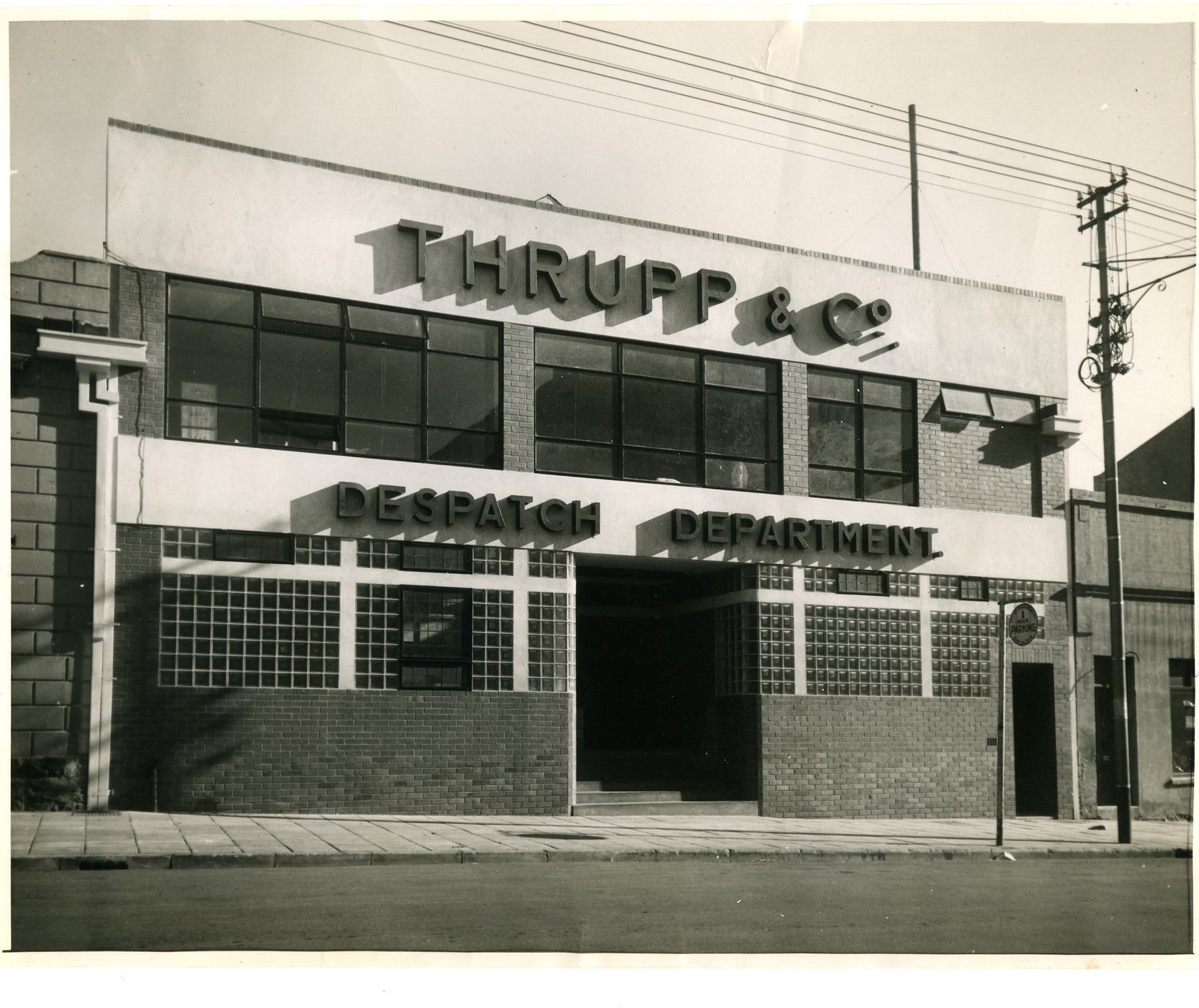
Charles Thrupp first opened a store on the corner of Eloff and President Streets in 1892. In 1947, the shop moved to the northern suburbs and in 1966 found its headquarters in Rosebank. Since then Thrupps (as it's now known) has become "the grocer of distinction", their shelves stocked with an interesting mix of great local produce and imported specialities. Back in the day, the grocery's daily delivery was by horse-drawn vehicles. Motors have since taken their place, of course, landing us firmly in the 21st century. Convenient as this may be, we'd highly recommend a visit to their physical location: nothing beats seeing, smelling and tasting the world of delicacies on offer for yourself.
Lower Ground Floor, Thrupps Illovo Centre, Cnr Oxford and Rudd Roads, Illovo
Mon – Fri from 07:45 – 18:00, Sat, Sun & public holidays from 08:00 – 14:00
1893: The Old Fort at Constitution Hill
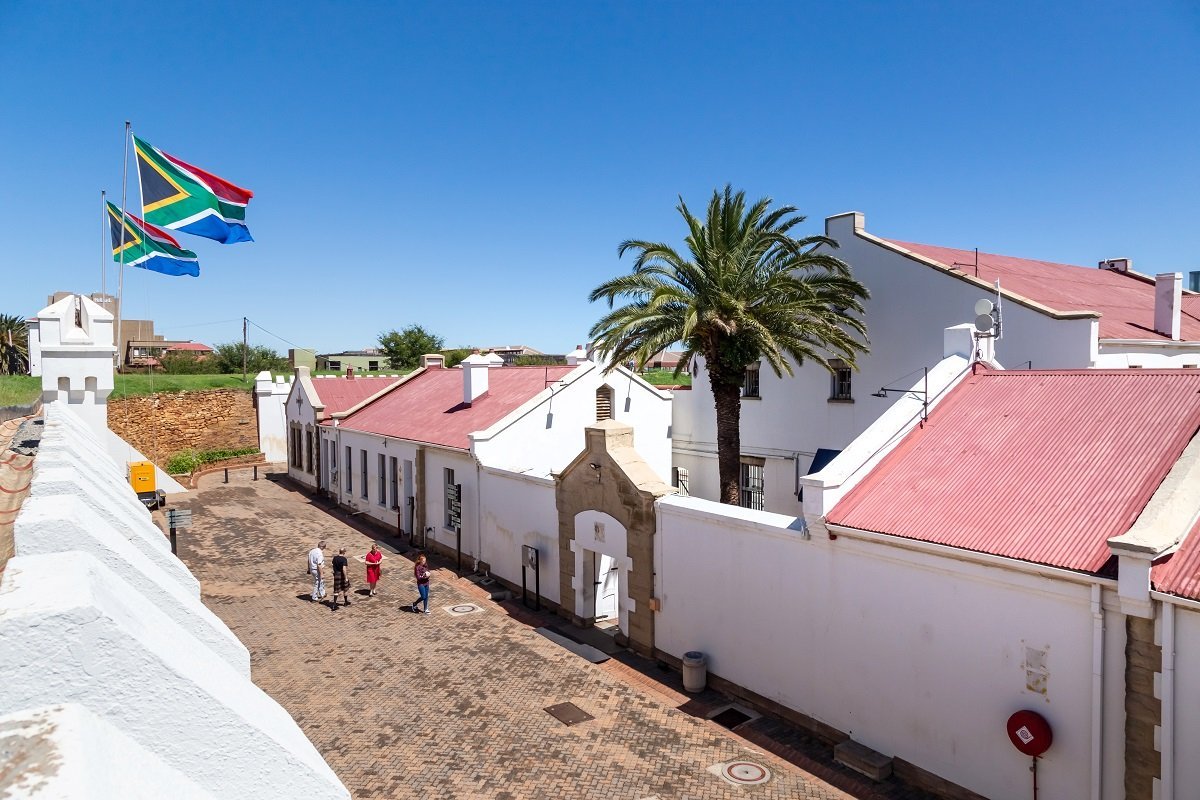
The Old Fort at the centre of the Constitution Hill complex was built as a prison in 1893. The ramparts were added after the Jameson Raid ended in 1896, turning the structure into a fortress to protect Johannesburg from the threat of invasion and to keep a watch over the miners flocking to the growing settlement. Following the end of the Anglo-Boer War, the fort became a jail for white prisoners. One notable exception is Nelson Mandela, who was briefly imprisoned here when he was arrested in 1962. His cell now forms the Mandela Cell exhibition. When visiting, be sure to walk around the fort ramparts for a fantastic view of the skyscrapers of the City Centre and a unique glimpse into the bustling neighbourhood of Hillbrow.
Cnr Joubert and Kotze Streets, Braamfontein
Mon – Sun from 09:00 – 16:00 (Closed Dec 25, 26 and Jan 1)
1896: Windybrow Arts Centre
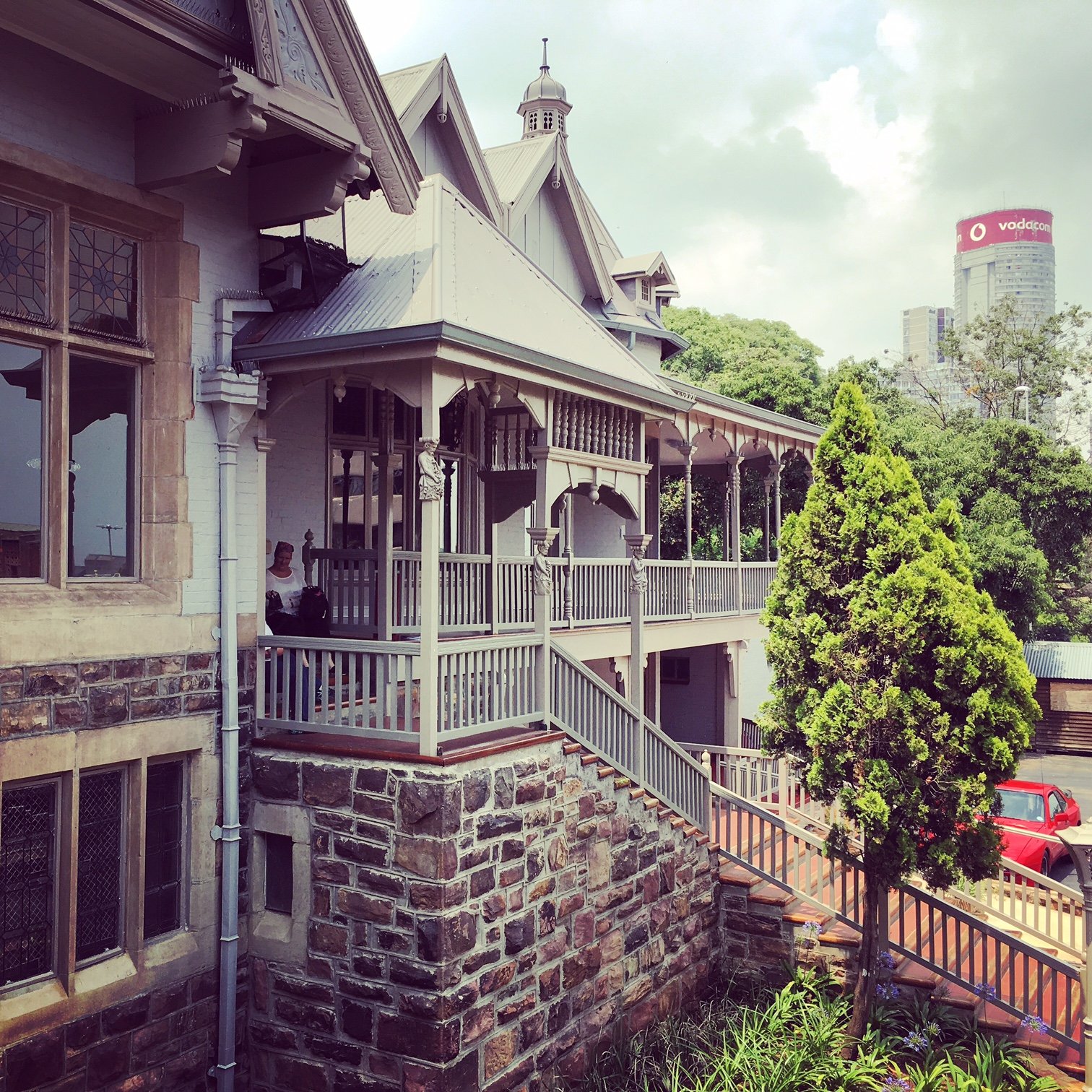
Windybrow Arts Centre has undergone many changes since its start as a mining engineer’s private mansion, originally built in 1896. It was an Anglo-Boer War officer’s mess, a boarding house, a nursing college residence, a nursing museum, and finally, since the 1980s, a performing arts centre under various managing bodies. Throughout its history, the building has undergone phases of disrepair – to the point where it was scheduled for demolition. Fortunately, it was placed under the stewardship of the Market Theatre Foundation in 2017, whose ongoing work in the arts for social justice made it a well-placed managing body to overturn the Windybrow’s colonial legacy and mobilise it as a connector through the arts across social divides.
161 Cnr Nugget and Pietersen Streets, Hillbrow
Mon – Fri from 09:00 – 16:00
1897: The View
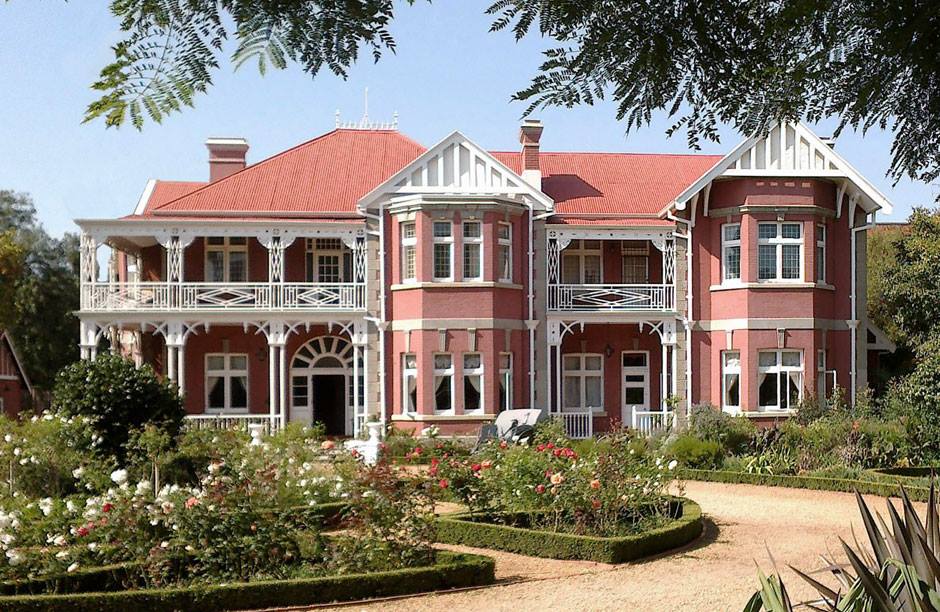
Designed by Charles Aburrow, The View is a historic Victorian mansion in Parktown and one of the oldest houses in Joburg. It was built in 1897 as the home of Sir Thomas Cullinan, the diamond magnate and founder of the Premier Diamond Mine in Cullinan where the Cullinan Diamond, the world’s largest diamond, was found. The house still stands and while the famed view towards the Magaliesberg Mountains and Pretoria after which it was named has since been obstructed by less impressive buildings, the interior has been preserved and the hand-painted friezes restored. It became a national monument in 1990 and is currently home to the Transvaal Scottish Regiment.
18 Ridge Road, Parktown
The View can be booked for events through the Transvaal Scottish Regiment. Microadventure Tours and the Johannesburg Heritage Foundation offer occasional tours of the house
1902: Arthur Bales
The happy place of sewers, knitters and textile crafters of every variety, the family-run Arthur Bales is one of South Africa's oldest haberdasheries. Since opening in 1902, it's become a destination point for the creative handcraft community. The small drapery and clothing store was originally situated on the corner of De Korte and De Beer Streets in Braamfontein, and in the early 1920s it moved down the road where it flourished for the next 70 years. Towards the end of the 20th century, the third generation, Arthur John Bales, was forced to close the last of its branches, making the Linden store (which opened in 1969) its flagship. Today this century-old gem is managed by two members of the fourth generation. With such vast experience preserved and a level of care that's always a treat to encounter, it's no wonder customers have been shopping here for over 60 years.Linden Centre, 62 4th Avenue, Linden
Wed from 09:00 – 17:30, Mon, Tue, Thu, Fri from 08:30 – 17:30, Sat from 08:30 – 15:00
1906: The Sunday Times
The Sunday Times was first published on Feb 4, 1906 as a weekly, sister publication of the Rand Daily Mail – at the time, the only other news outlet besides Transvaal Leader. The paper's founding editor George Herbert Kingswell introduced the slogan "A Paper for the People", which still endures today. It was an instant hit: 11,600 copies were printed and sold out, forcing the paper to print 5,000 more, and fast-amassing a loyal readership in the years that followed. Almost 120 years old, The Sunday Times is South Africa's biggest Sunday newspaper, distributed country-wide and over the border to Lesotho, Botswana and Swaziland. With its headquarters in Parktown, this Joburg institution has worked tirelessly for over a century. Who says print is dead?16 Empire Roard (cnr Empire and Hillside), Parktown
The Sunday Times is not open to the public.
1909: Villa Arcadia
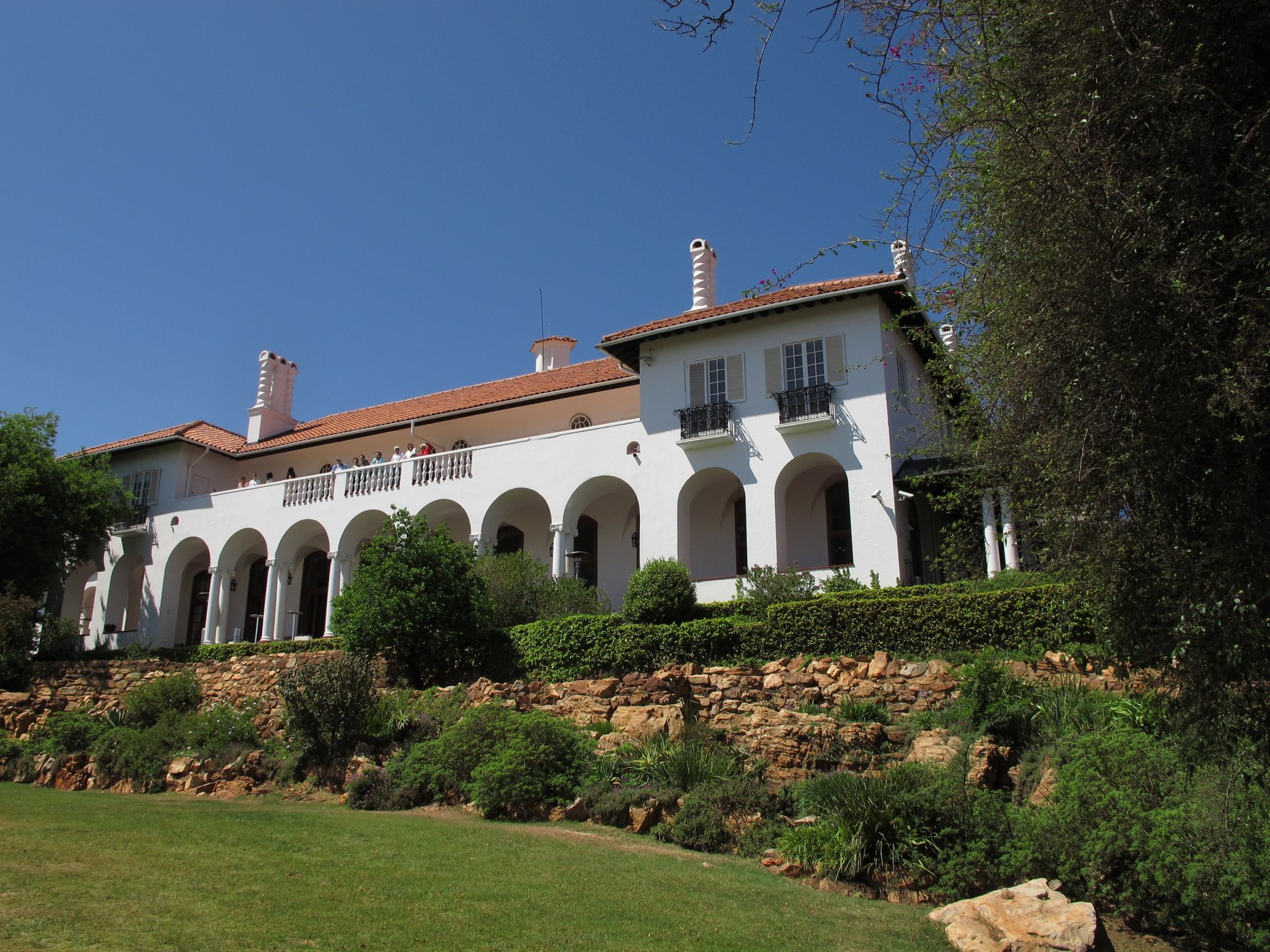
We’re sure you’ve seen the fabulous Villa Arcadia perched on the crest of Parktown Ridge. Or perhaps you've heard about the mansion’s former resident, Lady Florence Phillips – wife of Sir Lionel Phillips (one of the influential Randlords at the time) and an eccentric art-lover to boot who lined the walls of her home with masterpieces and tapestries. Now a historical landmark, Villa Arcadia was one of the first houses on Parktown Ridge when it was designed by distinguished architect Sir Herbert Baker in 1909. From these grand residential beginnings the mansion changed hands to the South African Jewish Orphanage in 1923 and, in 2003, the estate was bought by insurance company Hollard. In that sense, Villa Arcadia has come full circle, with art adorning its walls once more. In addition to the historical art collection on the grounds today, Hollard and the Spier Art Trust use the space to promote up-and-coming local artists, while the impressive library is filled with hundreds of books on South Africa's heritage.
22 Oxford Road, Parktown
Villa Arcadia is not open to the public
1910: Lindfield House
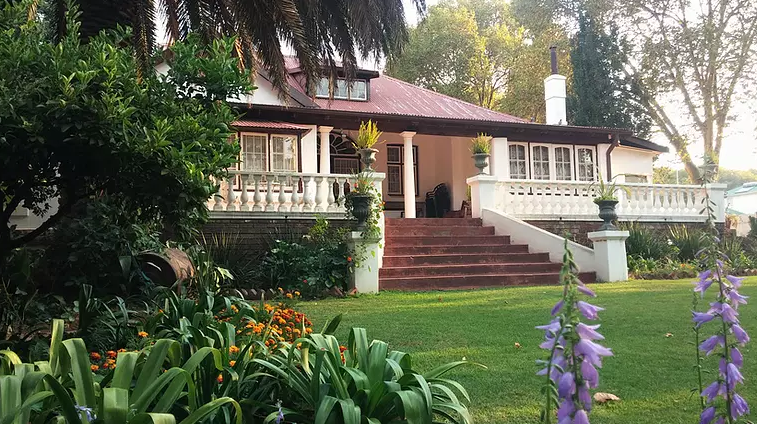
On a quiet street in Auckland Park, you’ll find Lindfield House, a monument to mostly Victorian life (with some Edwardian references) presided over by Katherine Love who has spent a lifetime collecting objects from her favourite era. The house was built in 1910 after the Victorian era – 1837 to 1901 – and not much of Victorian Joburg remains. But step inside, accompanied by Love, dressed as a parlour maid, and you will be transported to a different time. Like entering a still-life painting, visiting a house museum is a unique opportunity to stop time and imagine the past in spaces dedicated to its preservation.
72 Richmond Avenue, Auckland Park
Tours of the house are by appointment only (+27 11 726 2932) and are available daily from 10:00 – 17:00
1913: Everard Read Gallery
Everard Read Gallery is Africa’s oldest commercial art gallery. Established along a dusty street in the young mining town of Johannesburg, the gallery started its development in 1913 and still stands today, celebrating its centenary in 2013 and marking an impressive 110 years of existence in 2023. Throughout the 20th century, a large proportion of South Africa’s most important paintings and sculptures graced the gallery at its original location. After 50 years in the City Centre, a new gallery was built to house Everard Read on Rosebank's Jellicoe Avenue in the late 1970s – the building itself becoming a celebrated icon of South African post-modern design. As such a longstanding name in the South African art world, the gallery continues to showcase remarkable work, championing well-known artists and putting rising stars on the map.6 Jellicoe Avenue, Rosebank
Mon – Fri from 09:00 – 18:00, Sat from 9:00 – 13:00
1924: The Wilds

Established in 1924 on a donation of land to the city, The Wilds was landscaped with indigenous flora, ponds, and paths laid out in stone, and opened to the public in 1938. Yet the story of this beautiful, four-acre park hasn't only been a charming one. Though The Wilds was declared a National Monument in 1981, increased crime in the area became a deterrent and it fell into disuse. There were attempts at rejuvenation in the early 2000s, but the impact wasn't sustained. Even City Parks workers who continued to mow the lawns and sweep the paths were afraid to venture too far into the park. In 2014, artist James Delaney came upon The Wilds looking for a nearby place to walk his dog, Pablo. Intrigued and unwilling to let the park's reputation deter him, a years-long restoration process ensued, led by Delaney to restore this forgotten treasure to its former glory. You'll spot his colourful, laser-cut metal sculptures of animals throughout the park – now in their hundreds. The Wilds is split by Houghton Drive into West Wilds and East Wilds, and the two sections are connected by a pedestrian bridge.
Houghton Drive, Houghton Estate
Mon – Sun from 06:00 – 18:00
1929: The Radium Beerhall
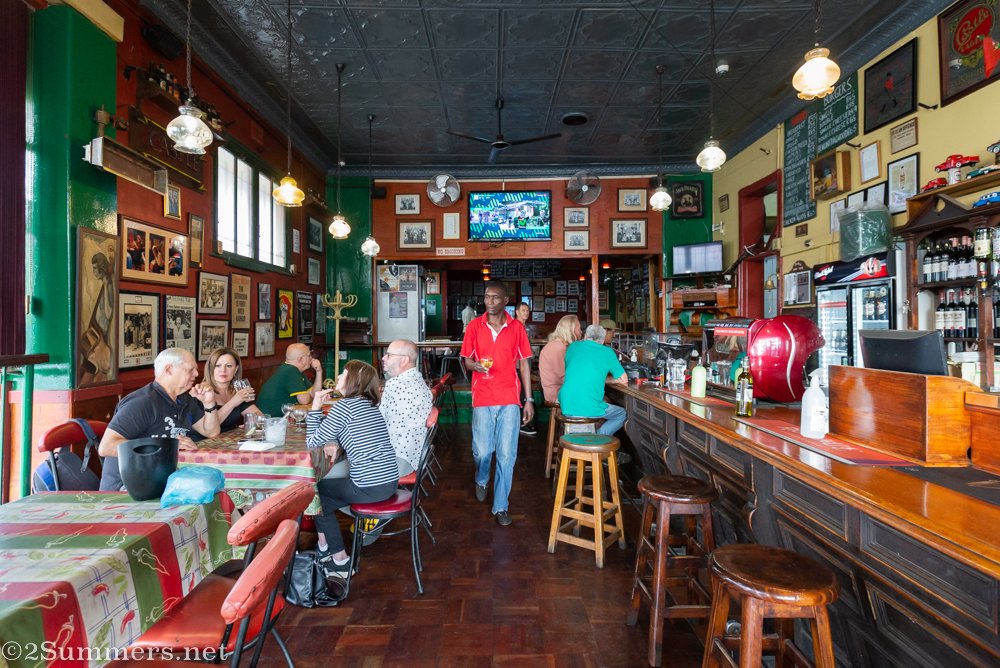
Although parts of the surrounding neighbourhoods have seen better days, this historic pub, which traces its history back to 1929 when it opened as a tea room and illicit shebeen, still brims with warmth and character. If beer and pizza aren't enough to get you there, gigs happen regularly at Joburg's oldest-running bar – from energetic blues and jazz to pared-back acoustic performances. The eclectic décor and colourful crew of regulars only add to its allure. Don't let the unassuming location deter you; The Radium is a memorable, one-of-a-kind spot with plenty of history.
Note: The Radium Beerhall is being auctioned on Wed, Oct 16, 2024. At this stage we have been advised that the pub's operations won't be affected by the change of ownership; watch this space.
282 Louis Botha Avenue, Orange Grove
Mon – Sat from 10:00 – 24:00, Sun from 11:00 – 17:00
1931: The Barbican
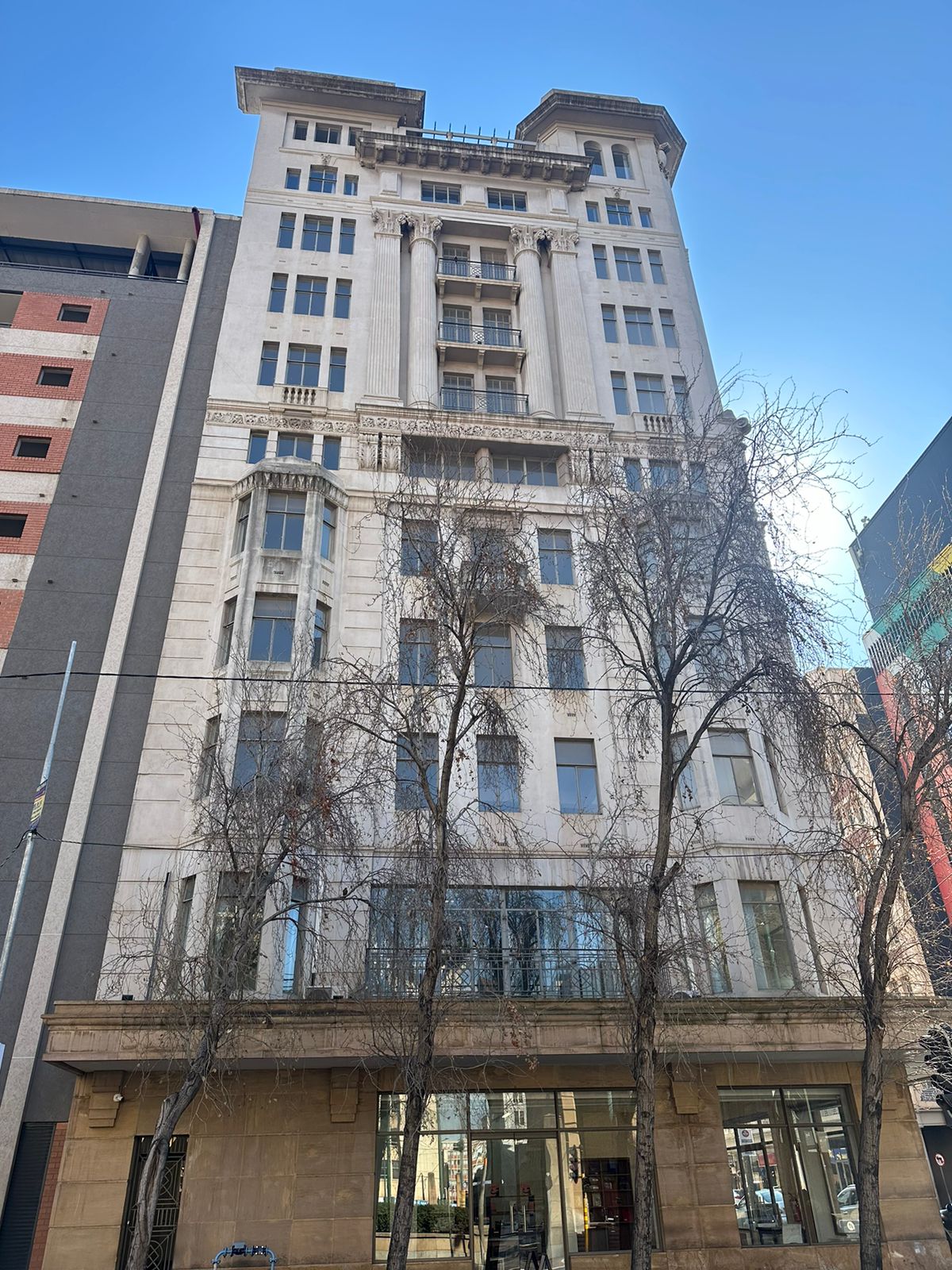
While the same can't quite be said for some of its neighbours, The Barbican is a beautifully preserved, landmark building in Joburg's City Centre that fuses eclectic classicism and Art Deco styles. In its past life, there was a shop on the ground floor and a tea room with a balcony on the first floor, while seven floors of offices rose into the skyline above. Thanks to extensive restoration efforts by Old Mutual the building retains much of its original charm, and is certainly one of the city's most striking architectural landmarks. Having recently come under new ownership, The Barbican is now home to our friends at Bridge Books – a beloved indie bookstore with Griffin Shea (also head of the Joburg Literary District) at its helm.
Corner Rissik and President Streets, Johannesburg
Mon – Fri from 08:00 –17:00
1931: City Outfitters
Deriving its name from the tailoring and outfitters licence legally required to offer tailoring or clothing retail services in South Africa in the early 1900s, City Outfitters is a retail institution in Jeppestown that continues to sell men’s shoes and clothing, much of which is imported from the United States. In 1931 Ismael Dajee opened City Warehouse, a general dealer, which later became the City Outfitters, or City Hall Outfitters, that we know today. Having run as a three-generational family business, Dajee’s son Mohammed took over from him and today Dajee’s grandson, Abdullah, owns the shop.46 Macintyre Street, Jeppestown
Mon – Fri from 09:00 – 17:00, Sat from 09:00 – 13:30
1961: Liliesleaf Farm
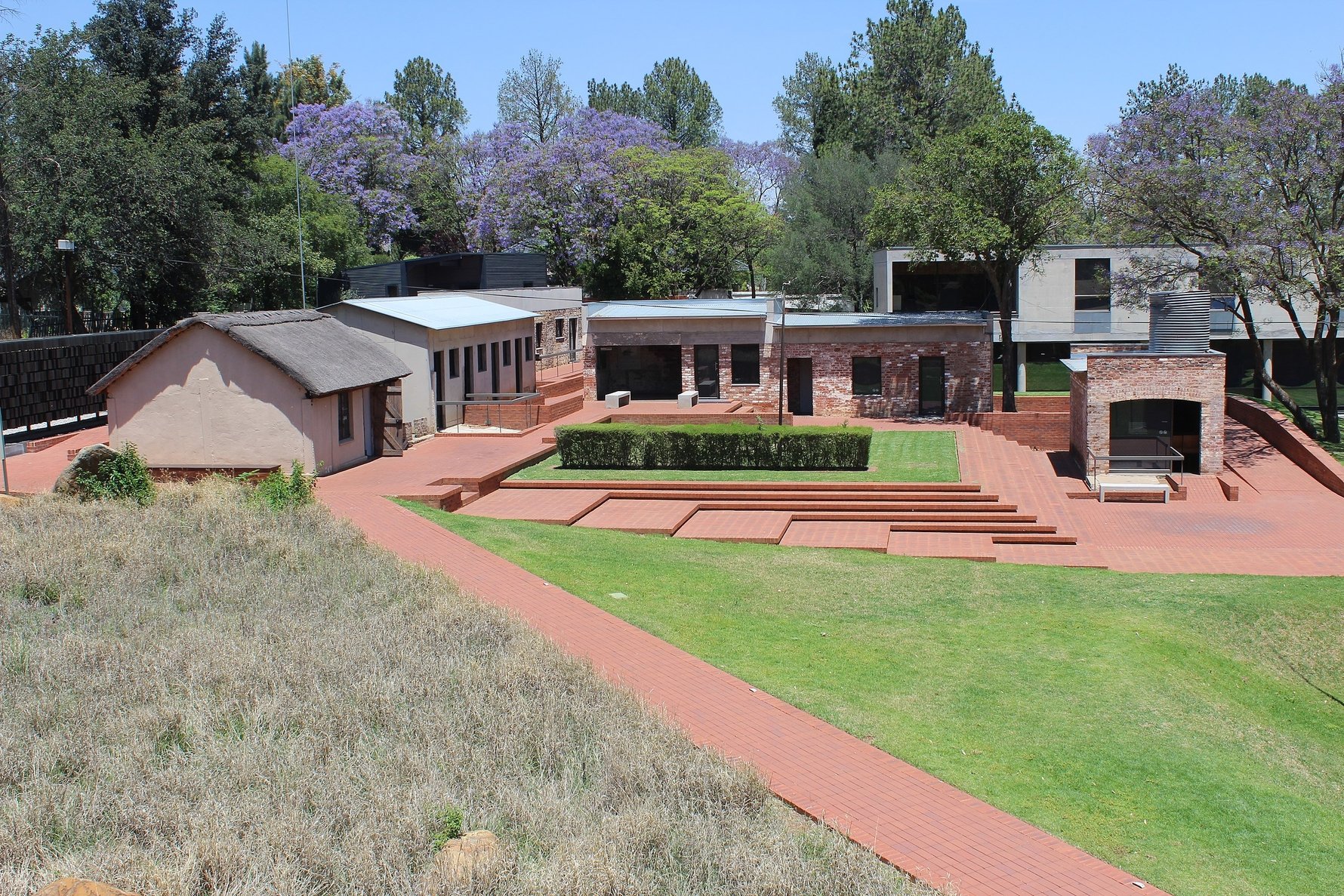
Widely regarded as the birthplace of Umkhonto we Sizwe (MK), the armed wing of the African National Congress, Liliesleaf Farm was bought by the South African Communist Party (SACP) in 1961 as a secret hideout and meeting place for anti-apartheid efforts. As such the idyllic property in Rivonia – now part of the sprawling upmarket Sandton suburbs – hosted some of South Africa's most prominent revolutionaries including Nelson Mandela, Walter Sisulu, Bram Fischer, Joe Slovo, and Govan Mbeki. It was here that the plans for an armed struggle, which eventually led to Mandela and many of his comrades facing life behind bars, were formulated. The property stands today as a national heritage site and museum, with dozens of interactive exhibits in the farm's many rooms and outbuildings.
7 George Avenue, Rivonia
Liliesleaf is not currently fully operational but plans to re-open the museum are underway
1961: Makotis
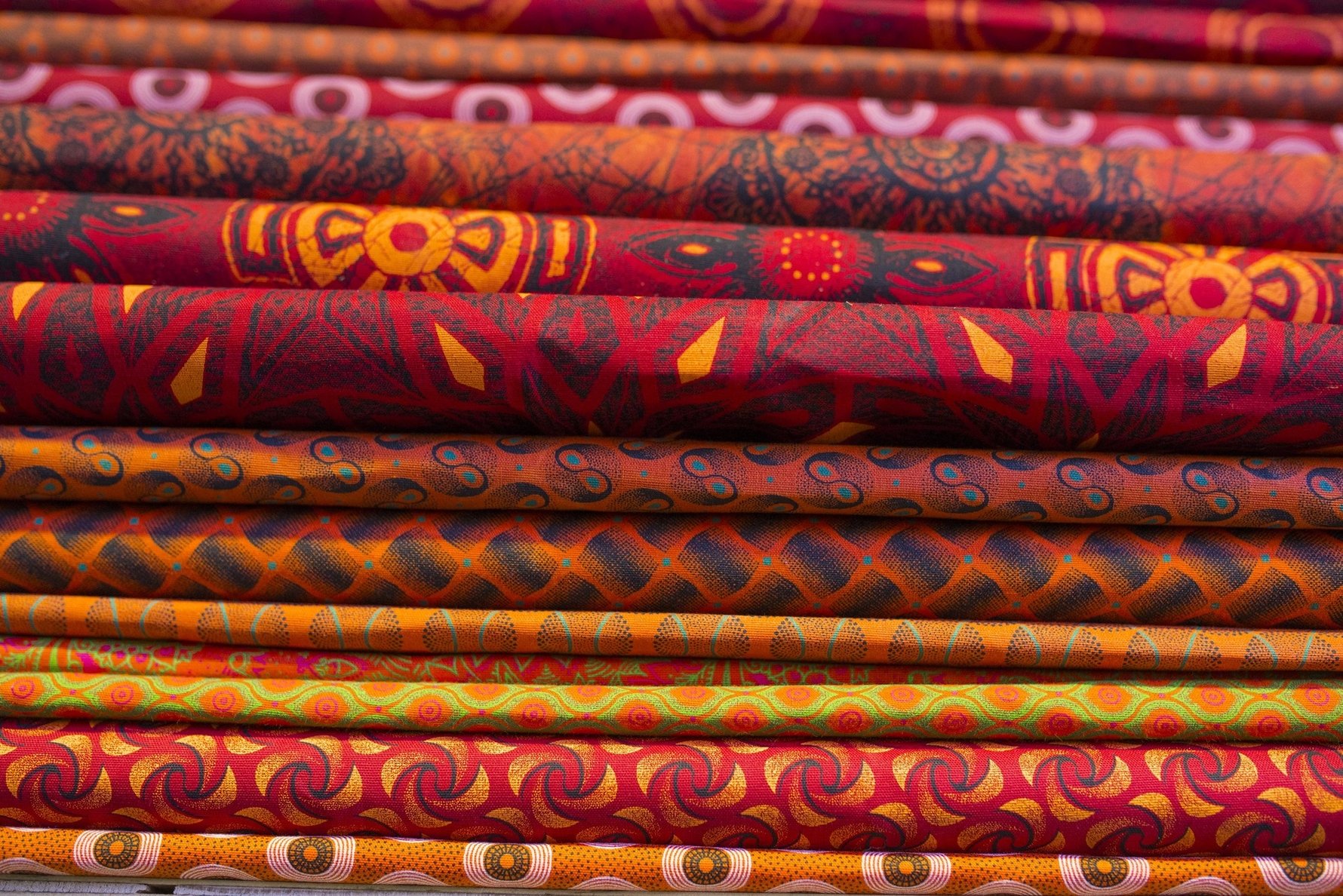
Run by the Wadee family, Makotis (meaning ‘bride’ or daughter-in-law in Zulu) is one of the largest retailers of African traditional fabric in South Africa. In 1961 Hajira Wadee and her husband, the late Ahmed Wadee, started selling socks and T-shirts from a small family store, Arcade Wholesalers, in the heart of Joburg's fashion district. Over the years the Wadees expanded into supplying shweshwe (a distinctly colourful and brightly patterned cotton) and other popular traditional fabrics from the famous Da Gama textiles factory. The couple's son Ashraf Wadee joined the family business and in the 1990s the Makotis store was launched at 112 President Street. Today, at the perennially busy shop in the City Centre, you can browse hundreds of different fabric designs in the biggest range of colours and prints. Alternatively, choose your fabrics and have your one-of-a-kind garment made up by the in-store tailors. Makotis also has a smaller, secondary branch in Northcliff.
12 Helen Joseph Street, Johannesburg; 159 Beyers Naudé Drive, Northcliff
Mon – Thu from 09:00 – 16:30, Fri from 09:00 – 12:00 and 14:00 – 16:30, Sat from 09:00 – 14:00
1966: Goodman Gallery
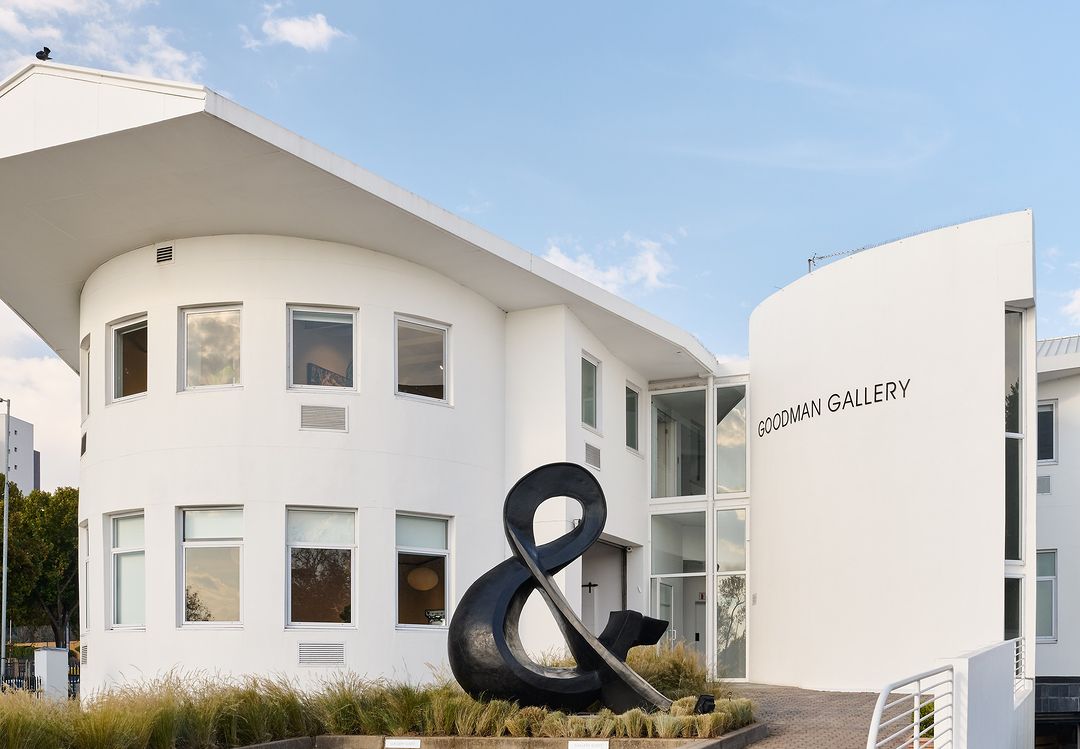
In 1966, Linda Givon (then Linda Goodman) opened the Goodman Gallery in Hyde Park, Johannesburg. In 1997, after a short closure in 1995, the gallery relocated to its current Parkwood space. During her reign, Givon racked up several iconic moments, including a police raid of Ezrom Legae’s controversial exhibition in 1978. The gallery has since played host to famous artists like Pablo Picasso, but have you ever wondered how renowned South African artists got their start? David Goldblatt, William Kentridge, David Koloane and Sam Nhlengethwa are but a few who showed with Goodman Gallery for the first time during South Africa's apartheid years. Today it's an international contemporary art gallery of note with locations in Johannesburg, Cape Town, London and New York, with a stellar roster of artists confronting entrenched power structures and inspiring social change.
163 Jan Smuts Avenue, Parkwood
Tue – Fri from 08:30 – 17:00, Sat from 08:30 – 16:00
1968: Thunder Gun
This steakhouse stalwart has been around since the 1960s and is still serving up perfectly seared beef with aplomb. Since its opening 55 years ago in 1968, Northcliff's iconic Thunder Gun has been a go-to for reliably great food, friendly and efficient service and excellent value for money. If you’re a steak aficionado you'll be happy to know their beef is super AAA grade and slow-aged; cooked with the restaurant's signature basting (or without, for purists) and flame-grilled to exactly your liking. Steak specialities to try here include the Camembert rump, cajun-spiced sirloin and the bacon and mushroom topped fillet.Cnr 281 Beyers Naude Drive and Lewisham Road, Blackheath
Mon from 11:30 – 20:30, Tue – Thu from 11:30 – 21:00, Fri – Sat from 11:30 – 21:30, Sun from 11:30 – 19:30
1973: Sandton City

A definitive silhouette in the Sandton skyline and home to over 300 of the world’s most in-demand brands, Sandton City is as iconic as shopping centres come. Harking back to the metropolis's early days in 1973, it was the first of its kind in the area, surrounded by sandy horse trails and grassy estates. Since then it's become one of the most prestigious retail destinations in Africa, marking Sandton as host to Africa's richest square mile, along with the premium office buildings, world-class hotels and vibrant hang-outs that populate the district. As this hub continues to develop, attracting a steady stream of investors, who knows what the next 50 years will bring once Sandton City's centenary celebration rolls around?
83 Rivonia Road, Sandhurst, SandtonMon – Thu from 09:00 – 19:00, Fri – Sat from 09:00 – 20:00, Sun and public holidays from 09:00 – 18:00
1974: Oriental Plaza
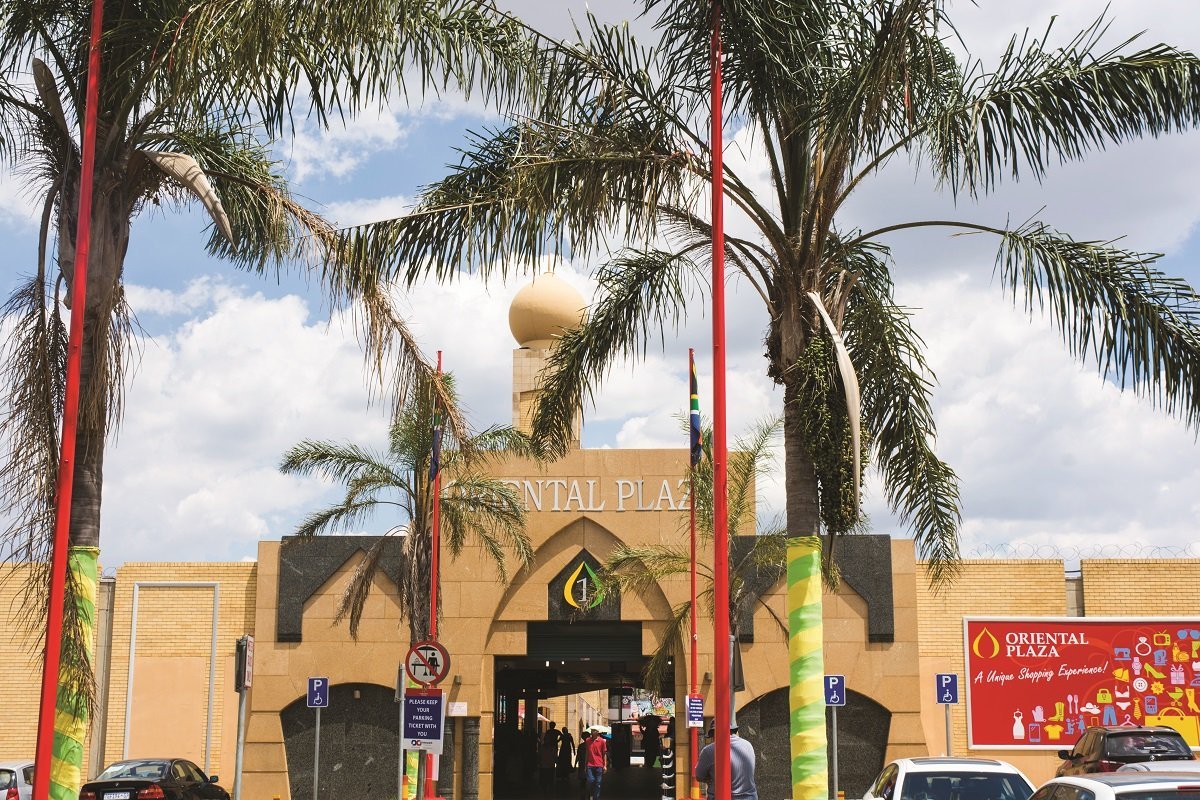
Built in 1974, the Oriental Plaza is one of Joburg's best-loved shopping spaces – the city simply wouldn't be the same without it. It had a rocky start, however, with a difficult first 10 years during which many businesses moved, merged or folded. In those days the centre was only attracting around 1,000 customers per month but 50 years later, and the Plaza is wonderfully well-trodden. At least 350 stores are housed within the vibrant, largely open-air complex in Fordsburg, covering 17 hectares and consisting of three sections: the north, south and central Grand Bazaar. Here, a successful balance is struck between Western-style shopping and craft markets in the City Centre. There are tables of pots, pans and crockery, small kiosks with hair accessories gleaming in the sun, fabric stores galore (with discounted prices) and authentic Indian and Middle Eastern restaurants, with more than one contender for Joburg's best samoosas.
38 Lilian Ngoyi Street, Fordsburg
Mon – Fri from 09:00 – 17:00, Sat from 09:00 – 15:00
Note: Some shops close between 12:00 – 14:00 on Fri and the Oriental Plaza is closed on certain public holidays; call ahead to avoid disappointment.
1975: Parreirinha
Having recently moved from their flagship La Rochelle location after 48 years (an old police station, no less) Parreirinha's new spot at Melrose Arch promises to continue its legacy as "the best Portuguese restaurant in the south of Joburg". Yet, this cherished piece of Joburg history is as unpretentious as they come, established by two brothers-in-law in 1975. For decades this restaurant has been a welcoming space where strangers are transformed into lifelong friends. And the food? If almost half a century of existence doesn't make you want to try it, their specialities should. Regulars recommend the starter platter, prawn cakes, seafood kebab and chocolate mousse, and who can forget about the legendary pastéis de nata?Melrose Arch, 1 Old House Lane, Melrose North
Mon – Sat from 12:00 – 23:00
1976: The Market Theatre
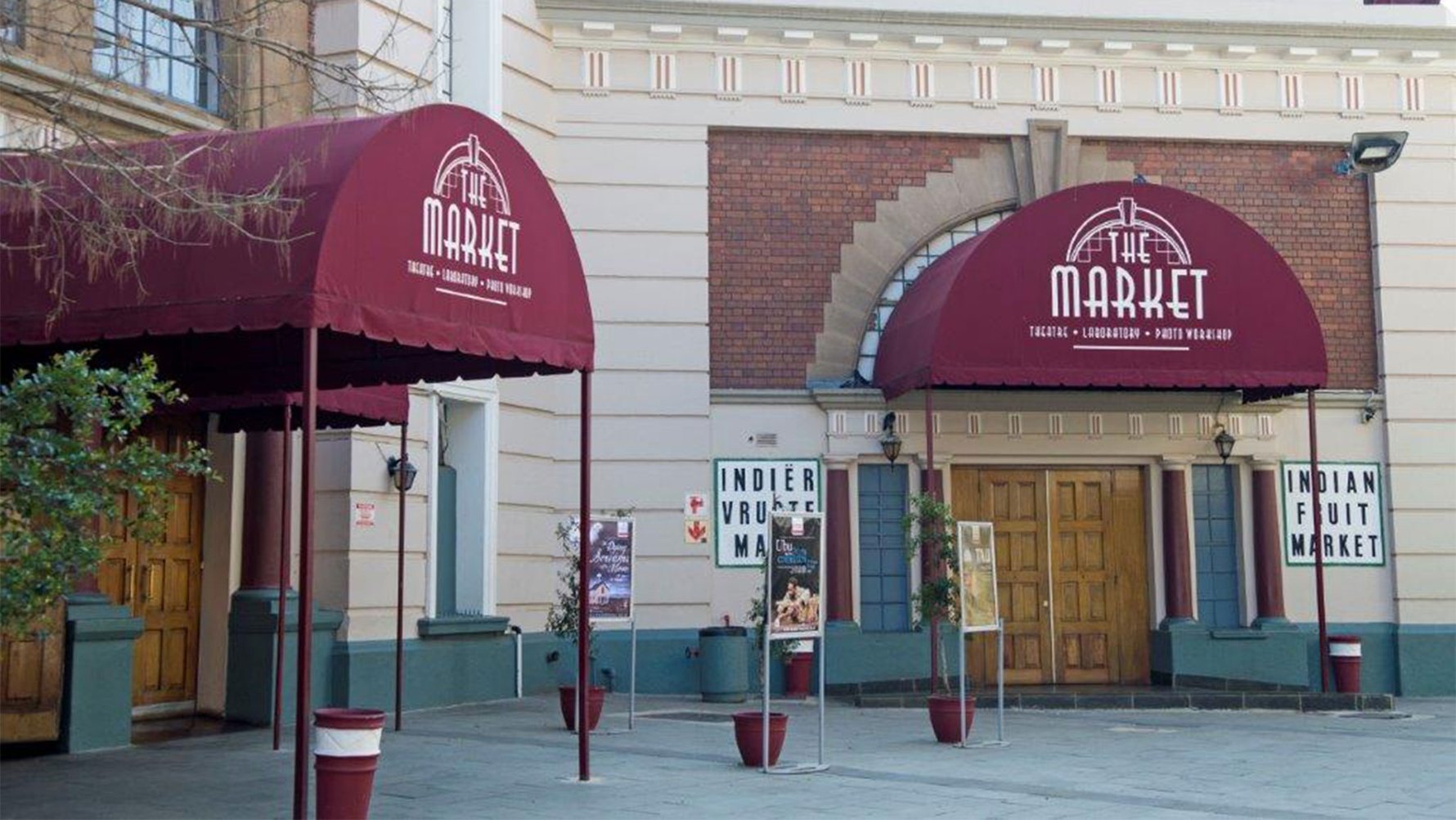
In 1976, Mannie Manim and the late Barney Simon took over Johannesburg’s Indian Fruit Market (built in 1913) and founded The Market Theatre, known internationally as South Africa’s “Theatre of the Struggle”. From the start it challenged the apartheid regime, providing a voice to the voiceless and bringing iconic works to the stage including Woza Albert, Asinamali, Sophiatown, You Strike a Woman You Strike a Rock and many of Athol Fugard’s plays. Armed with little more than the conviction that culture can change society, the theatre's 21 international and over 300 South African awards bear testimony to the courage and artistic quality of its productions. Through the decades The Market Theatre has grown into a cultural complex for theatre, music, dance and the allied arts; as ever, trailblazing important work from the country's performing arts movers and shakers.
56 Margaret Mcingana Street, Newtown
Mon from 09:00 – 16:00, Tue – Sat from 09:00 – 20:30, Sun from 12:00 – 16:00
1977: Turn 'n Tender
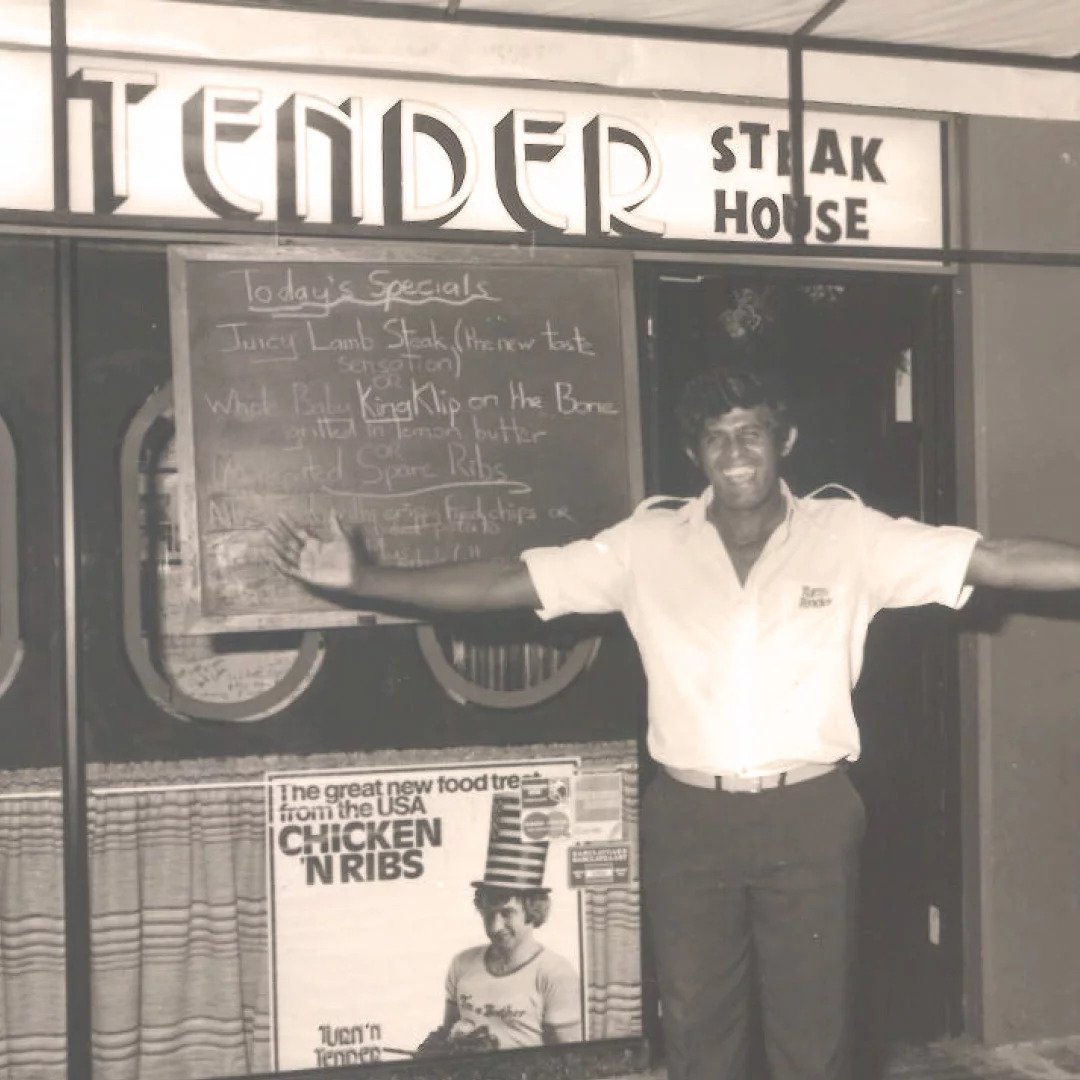
With 15 locations around South Africa, this local franchise has come a long way since its origins in 1977 when, 46 years ago, four brothers Aaron opened their first Turn ‘n Tender in Joburg's Greenside, going on to redefine what a steakhouse could be. These award-winning restaurants are now a household name, loved for their warm and welcoming atmosphere, and are an excellent, un-fussy choice for special (or just ordinary) occasions where expertly cooked steak and good wine are the order of the day. Try one of the Four Brothers specialities, steeped in history and nostalgia, or ask your waitron about the day's premium cuts.
Various locations and opening times; see here for your nearest Turn 'n Tender
1983: Impala Fruit & Veg
It's not only Northcliff and residents of the surrounding suburbs that frequent this legendary grocery; people travel from far and wide to get their goods from Impala Fruit & Veg, which celebrates its 40th birthday this year. The quality is unmatched at this family-run business, offering a wide array of local produce sourced directly from the farm and the fresh produce Joburg Market in City Deep daily. You'll go for the seasonal bounty and stay for the atmosphere. Service is friendly and efficient, even at peak times, while Impala's founder Francisco De Agrela (or Frank, to regular customers) is no less involved than he was at the start and retains a regular in-store presence that's felt.177 Beyers Naudé Drive, Northcliff
Mon – Fri from 07:00 – 18:00, Sat from 07:00 – 17:30, Sun from 07:00 – 14:00
1986: Kim Sacks Gallery
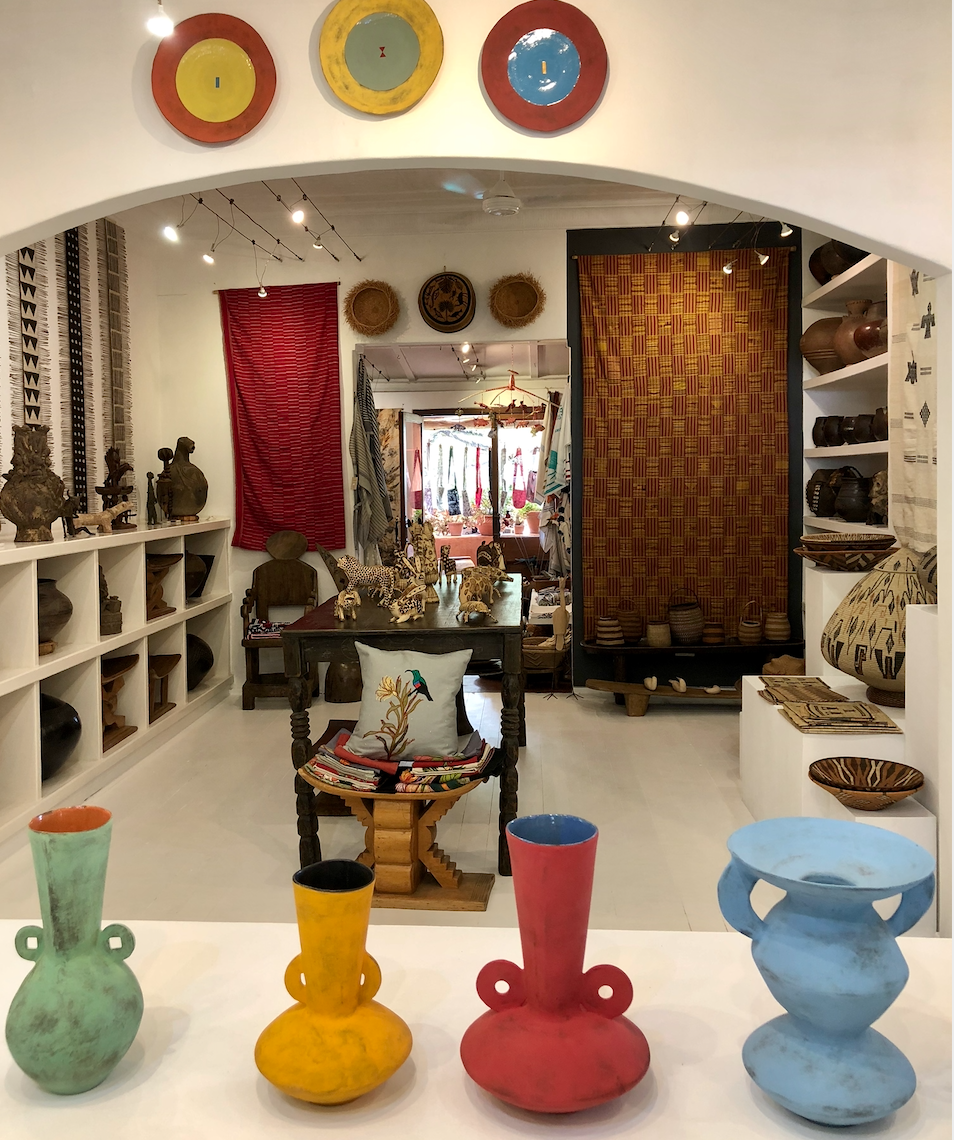
South African ceramist and collector of note Kim Sacks established her art gallery in 1986, which moved to its current Moorish-style building in Parkwood in 1988. This space is a veritable treasure trove of handicrafts bursting with woven baskets, beadwork, textiles, wood carvings and more; the objects of urban makers mingling with those of rural artisans, often rare and irreplaceable. Having run this extraordinary gallery for nearly 40 years, Sacks is a local expert on all things African and handmade. Loved by international travellers, Kim Sacks Gallery is a place to encounter the breadth and depth of African artistry and craftsmanship and to discover a world of beautiful objects that carry great traditional significance, as well as contemporary pieces. Sacks runs a vibrant ceramics school on the premises too.
153 Jan Smuts Avenue, Parkwood
Tue – Fri from 09:30 – 17:00, Sat from 10:00 – 17:00
1987: Nando's
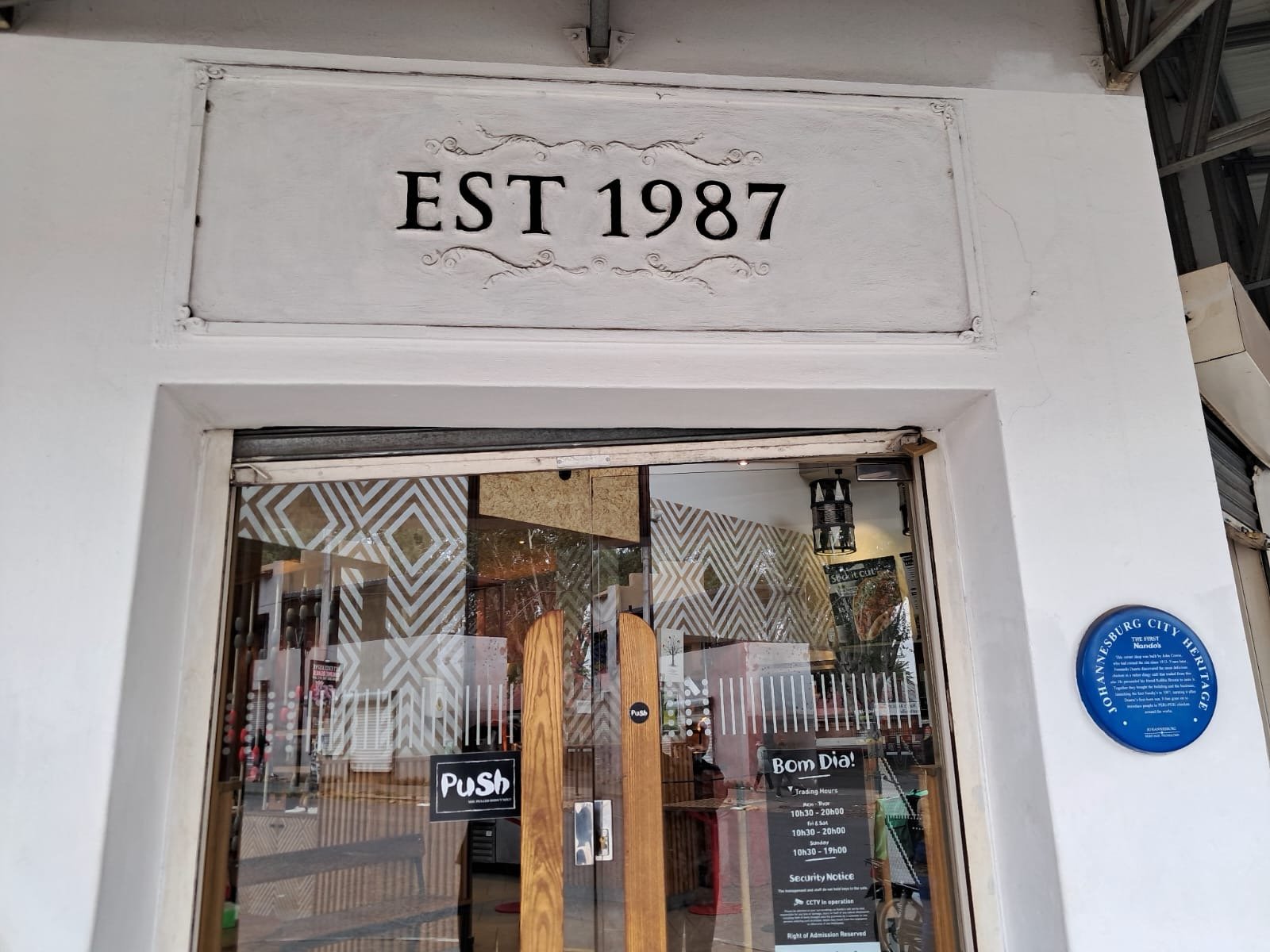
Now an international chain, Nando's had humble beginnings in Rosettenville, the heart of Johannesburg's old Portuguese community, in 1987. Famous for their flame-grilled chicken, they are a cut way above most fast food spots, with a reputation for deliciously cheeky advertising campaigns to boot. Nando's are also great supporters of local art and design, with the largest publicly displayed contemporary South African art collection (which you'll find on the walls of their many restaurant chains) and an annual competition for emerging designers. Not to mention Nando's Central Kitchen, their impeccably design-filled HQ in Lorentzville – a feast. It's a brand South Africans know and love, and one with its very own blue plaque (issued by the Johannesburg Heritage Foundation) marking the entrance to the original Rosettenville restaurant where it all started.
117 Main Street, Rosettenville
Mon – Sat from 11:00 – 20:30, Sun from 11:00 – 19:00
1987: Franco's
Franco Forleo worked part-time as a dining-room assistant at La Pizzeria in his student days, where he took the initiative to learn the art of flipping pizzas on the side. This paid off and he was soon asked to join the restaurant full-time, jumping at the opportunity to man a busy pizza oven. One thing led to another and eventually, Forleo took over the establishment, selling it in 1987 and buying a new spot that same year. Thus, the legendary Franco’s was born. Affectionately known as "the dining room of Parkview," Franco's serves up a spread of true Italian fare you won't soon forget. There are too many stand-outs to name: like the pizza con patate with sliced potato and rosemary, the excellent mushroom risotto, and traditional meat and fish dishes. Almost four decades later, Forleo himself continues his hands-on involvement alongside his grown-up sons and nephew.Upper Level, Office No.7, Parkview Centre, 54 Tyrone Avenue, Parkview
Tue – Sat from 12:00 – 21:00, Sun from 12:00 – 20:00
1989: Fournos
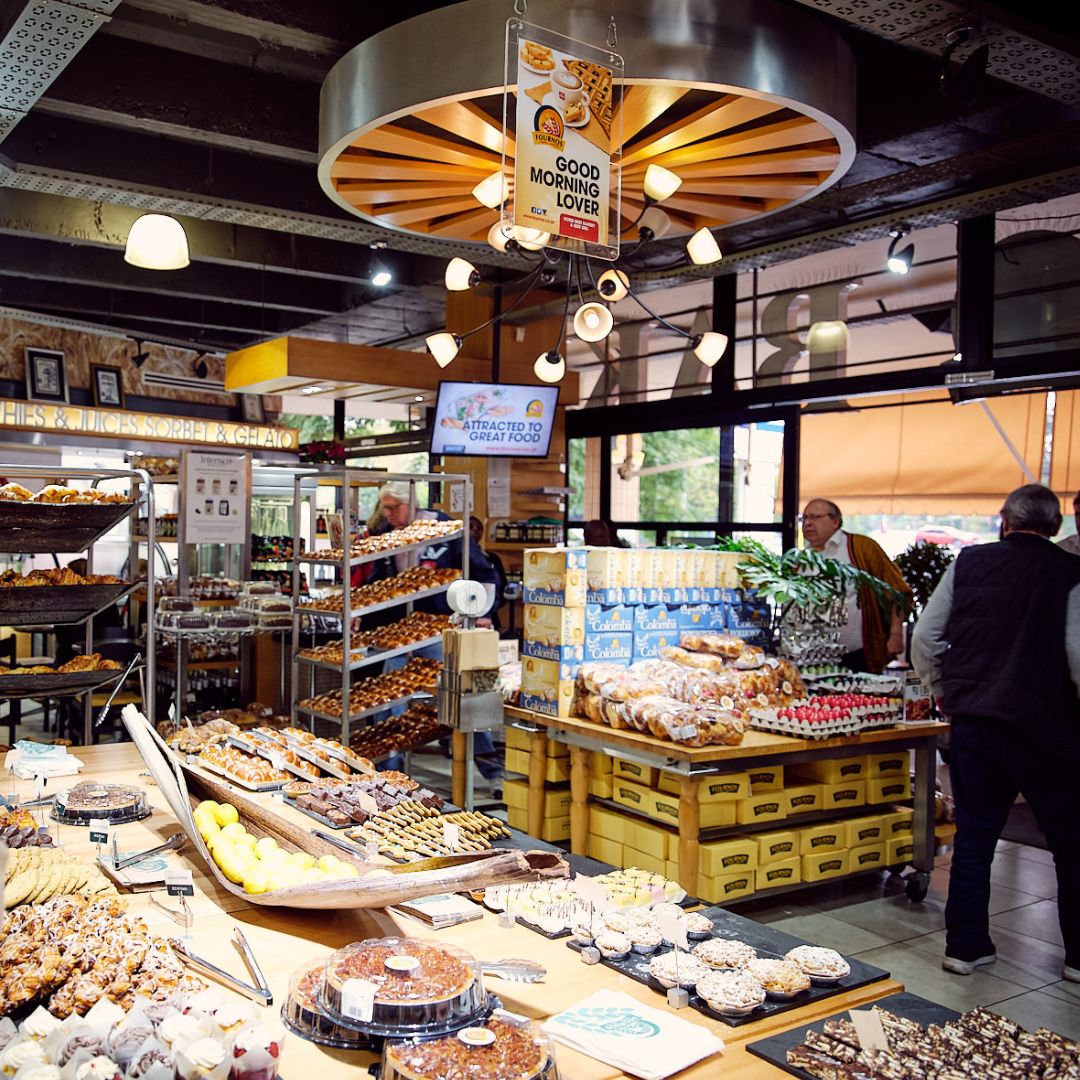
Consistently voted Johannesburg's best bakery, Fournos (named after the Greek word for furnace or oven) is a particular favourite among the city's breakfast and brunch crowds on weekends and a great place to pick up a weekday snack. Mike Kalogirou opened the first branch in Rosebank on Oxford Road in 1989 and this is still one of its most frequented sites today. The bakery has additional locations in Dunkeld, Woodmead, and Bedfordview, to name a few. Seriously good chocolate croissants – made fresh daily – are just one of the hundreds of treats on offer on any given day, while the deli section has a great selection of cheeses, freshly made pastas and sauces, cold meats, and other al fresco dining must-haves. And if it's the perfect picnic basket you're building, you'll find all you need here.
Various locations and opening times; see here for your nearest Fournos
1992: Bellinis
Bellinis was founded in 1992 by Jenny Richardson; now in its third decade, it's still as inviting as ever. The small, very popular Illovo restaurant has a host of regulars who come for the fresh food and friendly atmosphere, while some newcomers have discovered it as a great place to watch the rugby. On the menu is simple but accomplished bistro fare – the fillet Suzette, salmon rosti and blue cheese salad are delicious – and the excitable atmosphere is akin to a wine bar. This old-faithful is a must-visit if you haven't already had the pleasure, equally as good today as it was when the café first opened its doors.18 Chaplin Road, Illovo, Sandton
Mon – Sat from 11:30 – 22:00
1994: The Grillhouse
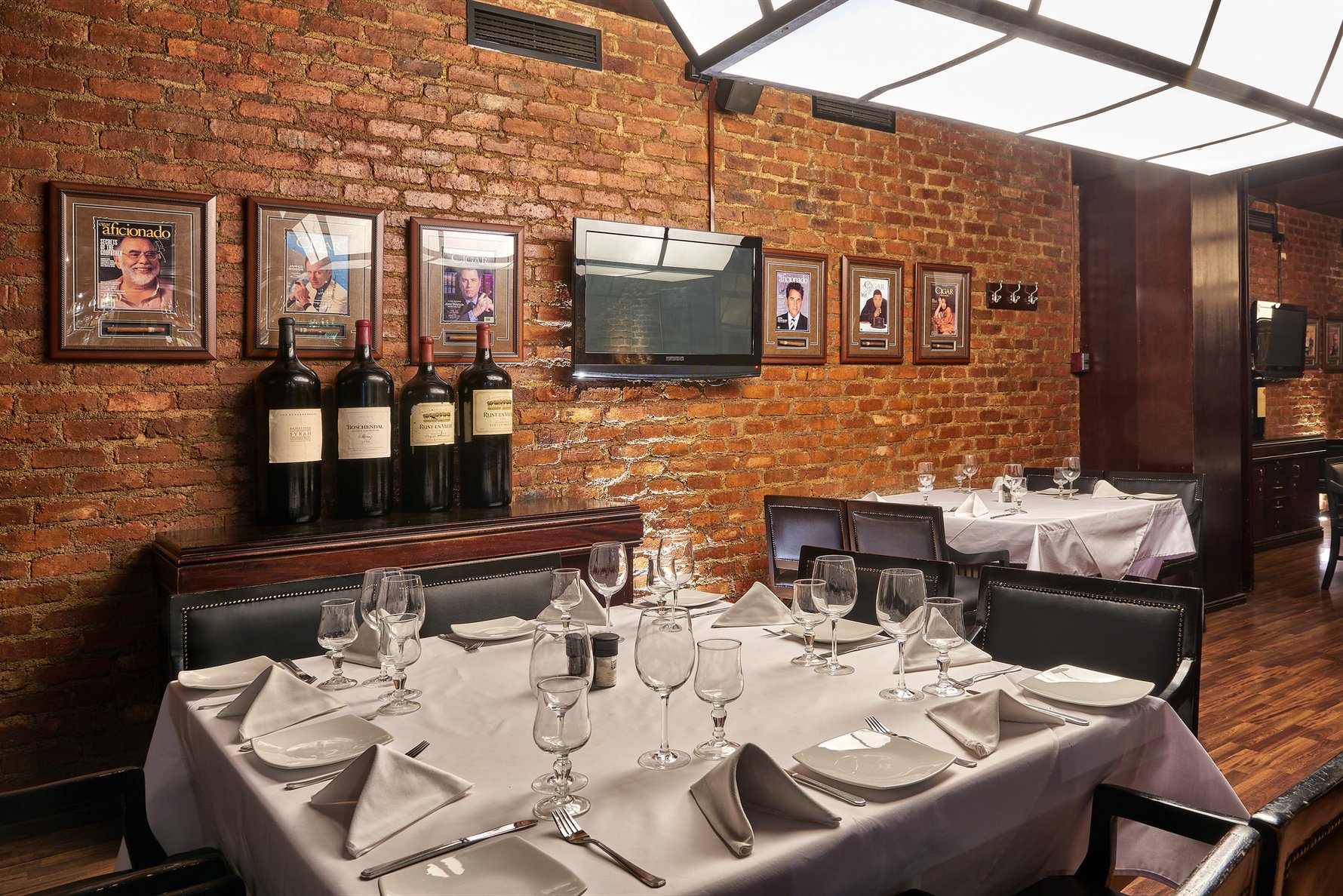
A more recent endeavour (relatively speaking, of course), The Grillhouse has been running since 1994 and offers the perfect quadfecta in dining: great food, a huge selection of fine wines and malts, stellar service and a vibe to match. Unquestionably, one of Johannesburg's most-loved steakhouses. With a few restaurants in its franchise, The Grillhouse is a regular mealtime destination for local and international businesspeople alike – you may even spot celebrities and politicians on your next visit. But don’t worry, it’s still a firm family favourite, too. Though The Grillhouse is famous for its steaks and ribs, the varied menu has something for everyone.
The Firs, Hyatt Centre, Oxford Road and Biermann Avenue, Rosebank
Mon – Sat from 12:00 – 22:00, Sun from 12:00 – 17:00
1997: David Krut Projects
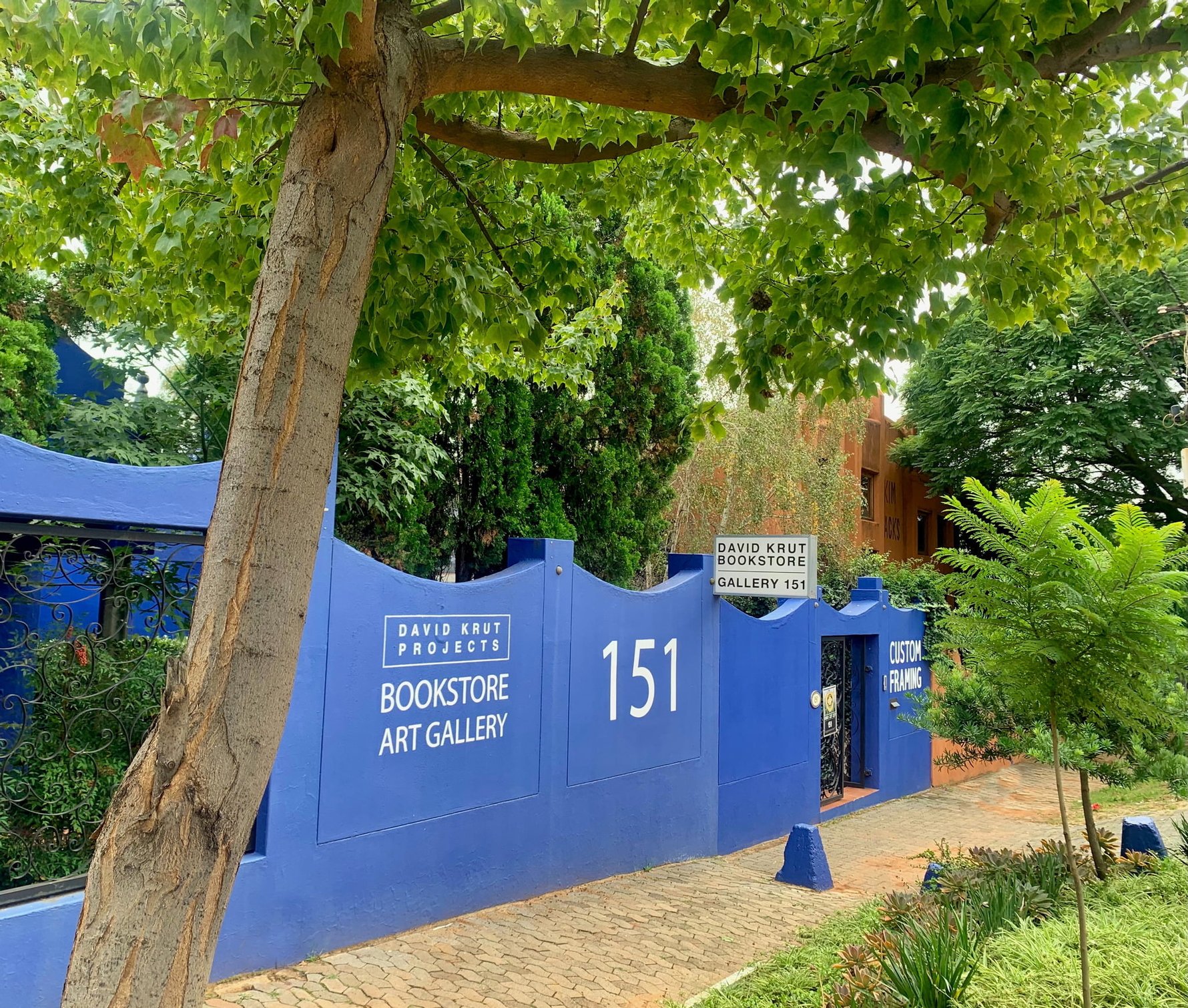
David Krut's foray into the world of art began in the early 1980s in London. In 1992, he became active in South Africa, first publishing the editions of William Kentridge. David Krut Publishing was officially established in 1997 and has since expanded to include a project space, art gallery, bookstore, printmaking studio and workshop across three locations: two in Parkwood and the third in Maboneng. Most accurately described as a "collaborative arts facility", the distinctive Blue House (the most recent location) on Jan Smuts Avenue is host to regular art shows and events, and the bookstore stocks exquisite local and imported art books, while David Krut Workshop based at Arts on Main produces fine art editions with well-known South African artists. What's next for this art force? It's only up from here.
142 and 151 Jan Smuts Avenue, Parkwood
Mon – Fri from 09:00 – 17:00, Sat from 09:00 – 16:00


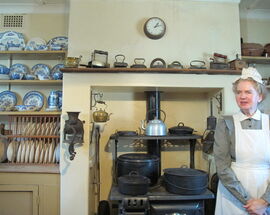

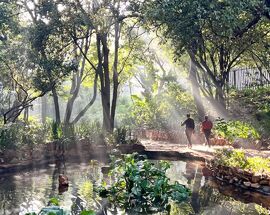


Comments